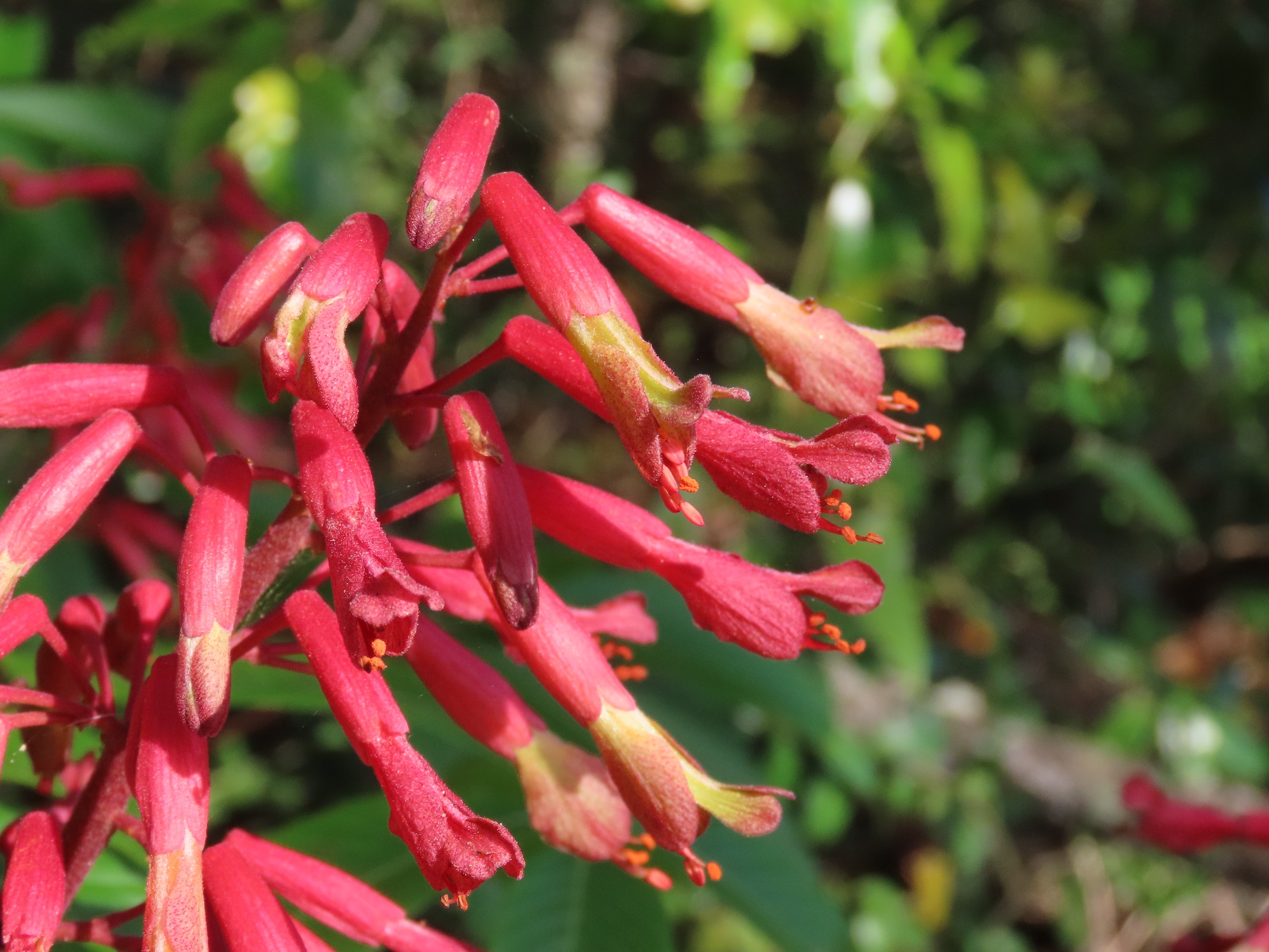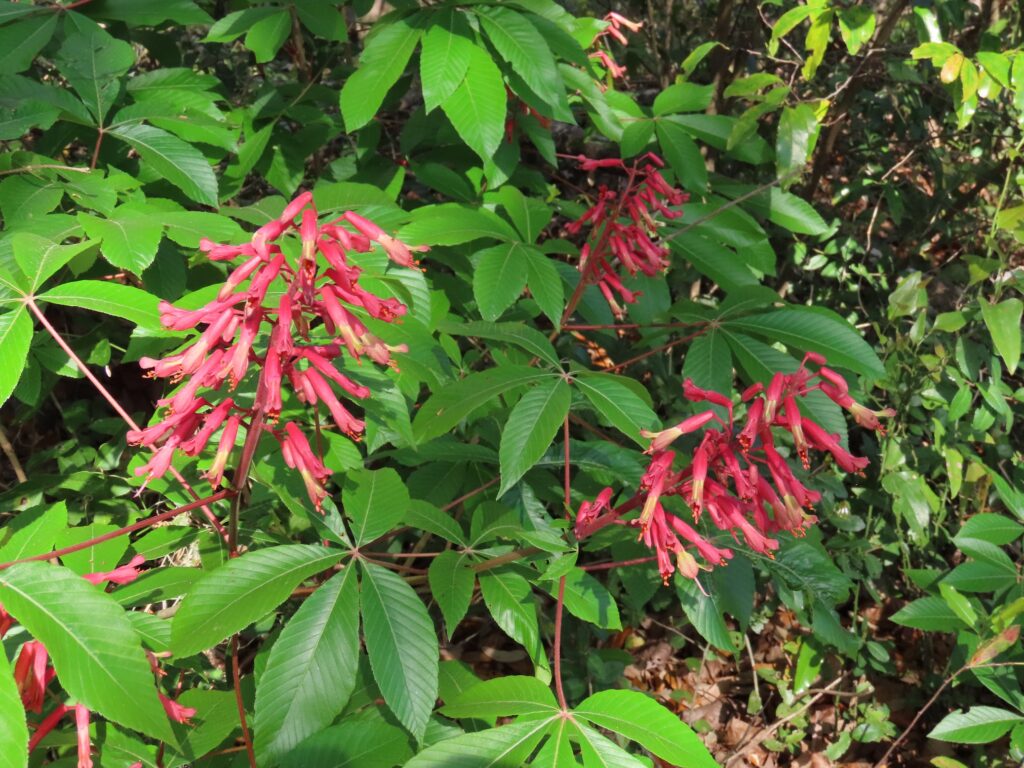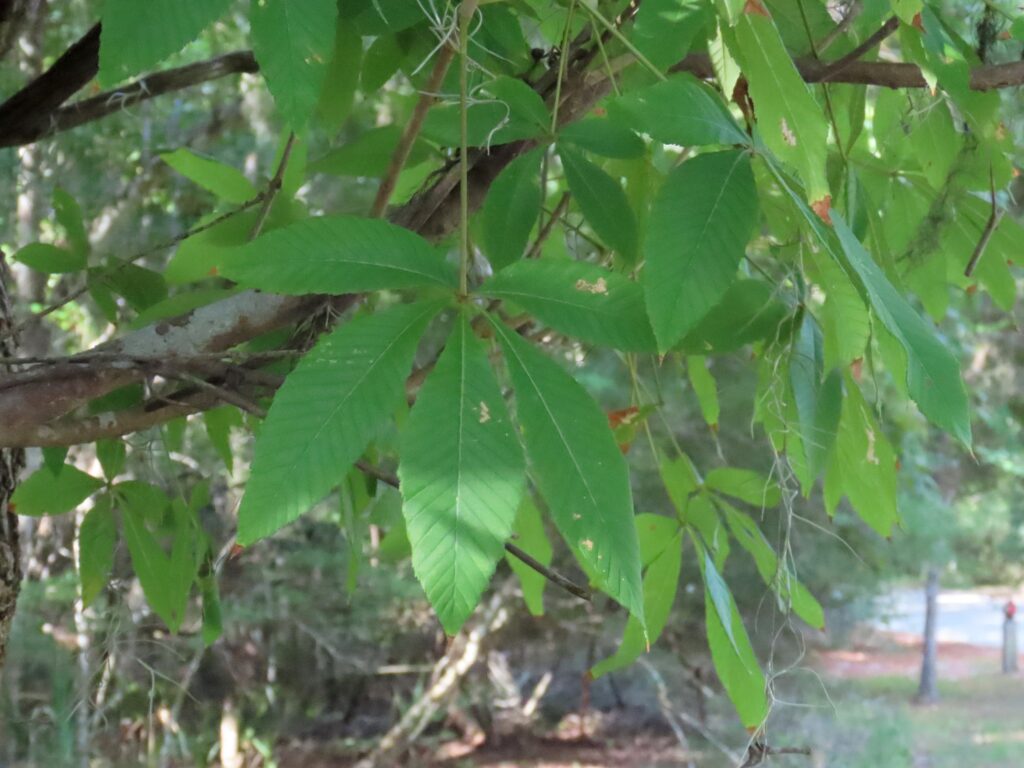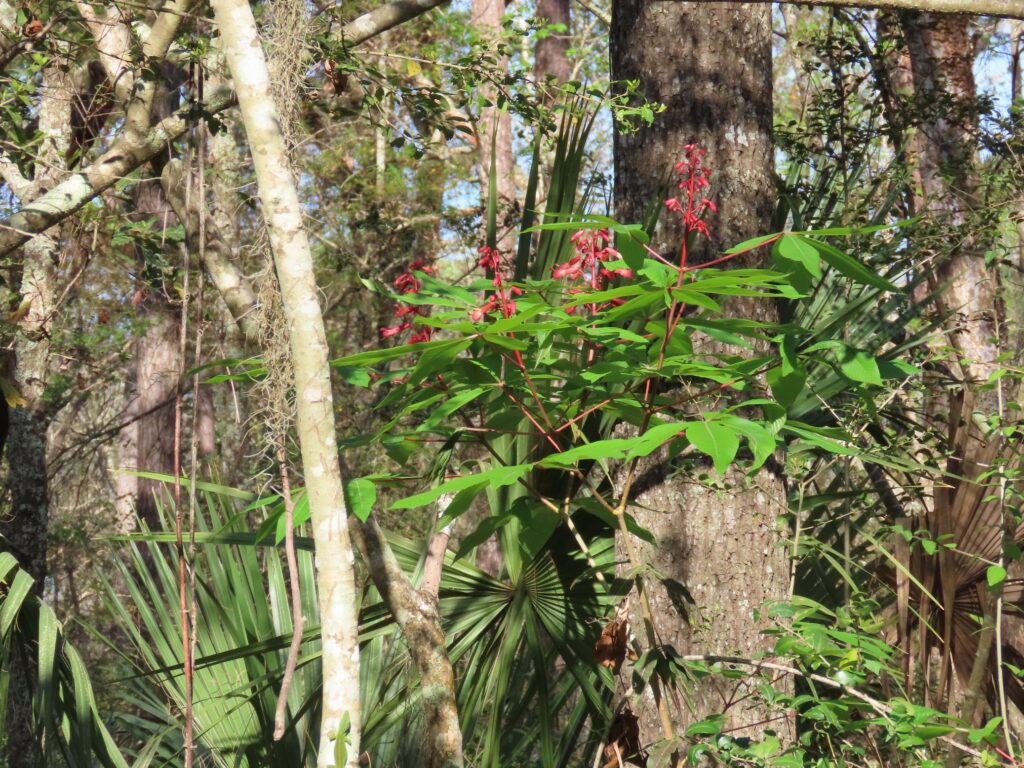



This week for Flora and Fauna Friday we have a squat, native, strawberry-blossomed shrubbery: Red Buckeye (Aesculus pavia).
Buckeyes are a genus of trees native to the eastern United States and west coast. The Red Buckeye is found throughout the coastal plain of the Southeast and is the only species of the genus found in the Lowcountry of South Carolina. They grow on the shady edges of forests atop well-drained sandy soils.
Red Buckeyes grow as small trees or, more often, shrubs. Their bark is a smooth gray blemished by warty orange lenticels and flakes of old bark. Leaves are oppositely arranged, uncommon for trees, and palmately compound, also uncommon for trees. These distinct hand-sized leaves make this plant easy to pick out from other forest flora. Those leaves dangle five simply-shaped jade-green leaflets with finely serrated margins and pale leaf veins, thin and many like the ribs of a fish. Red Buckeye blooms early each spring, breaking buds just after the solstice. Flowers are borne in upright spikes of many tubular grapefruit colored flowers. Each bush produces multiple sets of flowers across its crown. These flowers are adored by our Ruby-throated Hummingbirds, just arriving for the season, and add to the conspicuous nature of this plant. Pollinating insects appreciate them as well. These flowers set fruit and mature throughout the year to produce another key feature of the Buckeye.
The seeds of Buckeyes are their namesake, a large glossy nut the size and shape of a buck’s eye. This seed is grown inside a sand-tan pod that splits along its seams. The nut of Red Buckeye is a glistening pearl of caramel orange swirls and about the size of a strawberry. Although eaten by squirrels, the nuts of Red Buckeye are poisonous to humans, along with the leaves and wood of the plant. Certain species were even used by Native Americans to paralyze fish. They’d grind the seeds and stems of Buckeyes into a powder or pulp before scattering it into a small pond. The toxin would leach into the water, stunning the fish long enough for them to be scooped up.